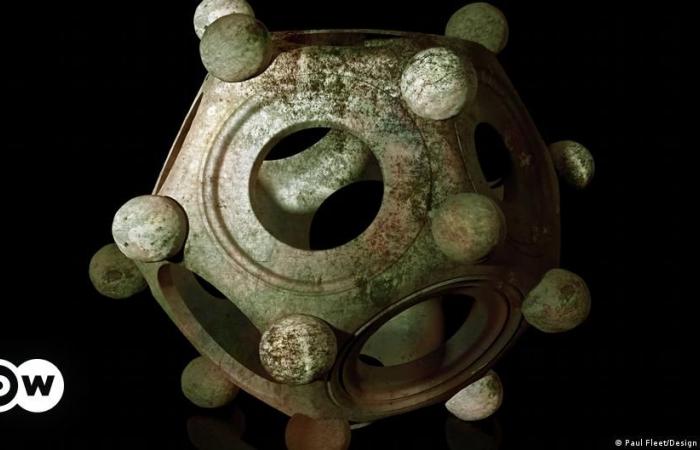In the vast and enigmatic field of archaeology, discoveries persist that continue to raise questions even to the most well-versed specialists; Certain objects are still a mystery today, challenging our understanding of many ancient customs. Natasha Harlow, a researcher in the department of classics and archeology at the University of Nottingham, examined in an article for The Conversation several of these enigmatic objects found in Great Britain.
Neolithic carved stone balls from Scotland
One of the most fascinating examples of these enigmas are the Neolithic stone balls found mainly in Scotland, dating between 3200 and 2500 BC. These spheres, meticulously carved with decorations ranging from spirals to concentric shapes, have been discovered in burials and settlements, but they are rarely identical or part of a group. Despite their age and evident tampering, the original use of these balls remains a topic of intense debate, as Harlow mentions: “Were they missiles to deter predators and pests? Weapons of war? Toys?” Or perhaps measuring weights, household ornaments, mnemonic devices, ball bearings for moving megaliths, or supports for threads?”
Roman dodecahedra
Another mystery is the Roman dodecahedra, objects dated between 43 and 410 AD, during the Roman occupation of Great Britain. These copper alloy pieces, found in various provinces of the ancient Roman Empire, are all different in size and rarely show signs of wear that would suggest specific use. The absence of representations in the art or literature of the time leaves its function to the speculation of archaeologists.
Folkton Drums
Neolithic chalk drums, discovered in children’s graves in Folkton, North Yorkshire and other areas of the UK, are another intriguing example. Despite their name, it is unlikely that they were used as musical instruments given the lack of wear from percussive use. Some studies suggest that they could have served as standardized measures of length or even as references to perishable containers.
Bronze Age Rings
Since the Bronze Age (1000-800 BC), “lock rings”, found in Ireland, the United Kingdom and parts of France, add to the list of mysteries. These delicate gold ornaments, often found in pairs and with geometric engravings, have been interpreted as possible nose rings, earrings or hair ornaments. However, Harlow notes that “none of these explanations are terribly satisfactory, as several elements of their design would make the rings difficult or uncomfortable to wear.”
Romano-British cosmetic grinders
Finally, the cosmetic grinders of Romano-British Britain, dated between 100 and 200 BC, are copper alloy utensils including a mortar and pestle, decorated with waterfowl and bovid motifs. It is thought that they could have been used to prepare medicines, aphrodisiacs, cosmetics or narcotics. However, the contents of these mortars have never been successfully analyzed, keeping their exact function a mystery.
These artifacts underscore the complexity and challenges of archaeological work, reminding us that, despite technological advances, the task of unraveling the past is more difficult than is often perceived. Each new discovery invites experts to look closer and imagine the lives of those who used them millennia ago.
Felipe Espinosa Wang with information from The Conversation.






